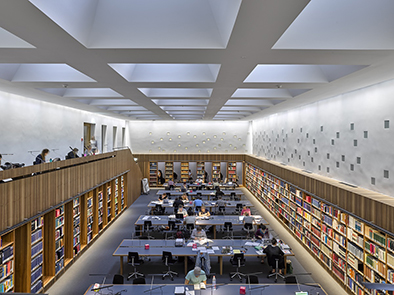Münstergasse Library
Opening hours
The displayed usage is not accurate to the seat. At break times the usage can be higher.
Service Hours
Borrowing and returning
Borrowing books is possible from Monday to Friday during all opening hours and Saturdays from 8 a.m.-5 p.m.. On the Sundays it is not possible to borrow books, media or loan items.
Returns are possible during all our opening hours, e.g. via the return box.
Consultation hours
Monday to Friday 1 p.m.-5 p.m.
Special reading room for historical collections
Tuesday to Thursday 10 a.m.-5 p.m.
Different opening times (such as on the eve of Good Friday, Ascension Day and 1 August) and extraordinary closures (such as on public holidays and during the last week of the year) are noted on the special reading room page.
Service
Infrastructure
- 300 individual work spaces (1st floor and 1st and 2nd basement floors)
- 6 collaborative work spaces with Smartboards and screens with HDMI connectors (reservation required, web page in German/ Terms of use, document in German) (1st basement floor)
- 24 rentable carrels for long-term use (7.- per month/ Terms of use, document only available in German) (2nd basement floor)
- 94 monthly lockers and 12 day lockers (Terms of use, document only available in German) (1st basement floor)
- special reading room for historical collections (1st basement floor)
- event hall for conferences, training courses, etc. (1st basement floor)
- wireless network
- research stations (1st floor, ground floor and 1st basement floor)
- Uniprint devices for printing, scanning and photocopying (1st floor and 1st basement floor)
- book scanner (1st basement floor)
- access to Web Archive Switzerland e-Helvetica (1st floor)
- validation station for UniCards (1st basement floor)
-
indoor return box (ground floor)
Services
- general information
- subject specific information
- information on historical collections
- interlibrary loan and courier services
- EOD – eBooks on Demand (ordering service for TIFFs or full texts)
- rental of notebooks
- sale of USB sticks (CHF 7 for 16 GB)
-
lending of headphones and charging cables
Further Information
Collection
- Bibliothek Münstergasse is the oldest library of the UB Bern and houses the historical book collections and various special collections. Books and documents printed before 1900 and the Rara section are managed by the Historical Collections Center ZHB.
- As part of its mandate as a cantonal library, the Münstergasse Library acquires literature from and about the Canton of Berne (Bernensia). The most interesting titles of this collection are available as a reference library in the Information and Bernensia section of Münstergasse Library.
- The majority of the holdings are located in the University Library Storage Facility and can be ordered through our online catalog.
- Reading room in the basement: basic selection of printed reference works from all subject areas (call numbers starting with LS).
- Schultheissensaal: scientific journals, general reference works, books on academic writing and study guides.
- Information and Bernensia section: books on Bernese culture and literature, local newspapers and magazines.
- Newspaper-Lounge: regional, national and international daily and weekly newspapers and popular magazines.
- Access to over 6,000 international newspapers and magazines from over 100 countries in around 60 languages, including up-to-365 Days archive.
- Music streaming database in CD sound quality: "Naxos Music Library" with over 120,000 classical CDs.
- Access to all electronic resources of the University Library (see also databases for customers from the Canton of Berne).
Events and courses
For information on our cultural program and our courses, please consult the corresponding website in German.
Contacts
Library director

- Name / Titel
- Leandra Meyer
- Funktion
- Head of Münstergasse Library / Ad interim: Co-Head of Reading Rooms Team
- leandra.meyer@unibe.ch
- Phone
- +41 31 684 92 74
- Phone2
- +41 31 684 92 11
Customer service

- Name / Titel
- Kathrin Johner
- Funktion
- Head of customer service / Head of Reference and Learning Space / Ad interim: Co-Head of Reading Rooms Team
- kathrin.johner@unibe.ch
- Phone
- +41 31 684 92 24
- Phone2
- +41 31 684 92 11
Circulation

- Name / Titel
- Andrea Zumofen
- Funktion
- Head of circulation
- andrea.zumofen@unibe.ch
- Phone
- +41 31 684 93 13
- Phone2
- +41 31 684 92 11
Reference and Learning Space

- Name / Titel
- Kathrin Johner
- Funktion
- Head of customer service / Head of Reference and Learning Space / Ad interim: Co-Head of Reading Rooms Team
- kathrin.johner@unibe.ch
- Phone
- +41 31 684 92 24
- Phone2
- +41 31 684 92 11
Reading Rooms

- Name / Titel
- Kathrin Johner
- Funktion
- Head of customer service / Head of Reference and Learning Space / Ad interim: Co-Head of Reading Rooms Team
- kathrin.johner@unibe.ch
- Phone
- +41 31 684 92 24
- Phone2
- +41 31 684 92 11

- Name / Titel
- Leandra Meyer
- Funktion
- Head of Münstergasse Library / Ad interim: Co-Head of Reading Rooms Team
- leandra.meyer@unibe.ch
- Phone
- +41 31 684 92 74
- Phone2
- +41 31 684 92 11
Historic Collection Center

- Name / Titel
- Dr. Valentina Sebastiani
- Funktion
- Head of Center Historical Collections
- valentina.sebastiani@unibe.ch
- Phone
- +41 31 684 92 84
Old and Rare Book Collection

- Name / Titel
- Dr. Stefan Matter
- Funktion
- Curator
- stefan.matter@unibe.ch
- Phone
- +41 31 684 92 50
- Phone2
- +41 31 684 92 11
Bernensia Collection
- Name / Titel
- Thomas Hayoz
- Funktion
- Head of Bernensia Collection
- thomas.hayoz@unibe.ch
- Phone
- +41 31 684 92 85
- Phone2
- +41 31 684 92 11
Retro-Digitalization

- Name / Titel
- Beat Vonlanthen
- Funktion
- Head of Retro Digitization Service
- beat.vonlanthen@unibe.ch
- Phone
- +41 31 684 93 46
Preservation Services
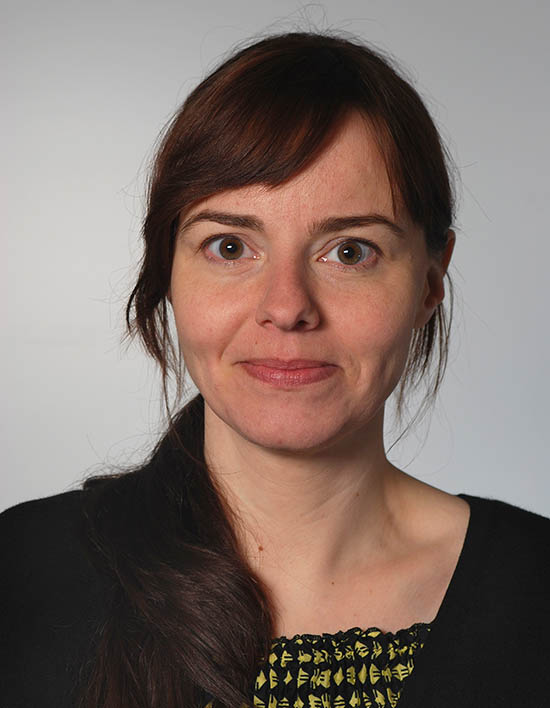
- Name / Titel
- Petra Hanschke
- Funktion
- Deputy Head Center Historical Collections
Head of preservation services - petra.hanschke@unibe.ch
- Phone
- +41 31 684 93 49
- Phone2
- +41 31 684 92 11
History
The history of the first secular library building in Switzerland
Between 1533 and 1535, the book collections of the Latin School, the canons' monastery and the dissolved Bernese monasteries were brought together in the west wing of the Barfüsserkloster to form the "Libery" of the Hohe Schule. The book stock grows mainly through donations from private scholars or from High School professors such as Arthopoeus (Niklaus Pfister) or Johannes Fädminger.
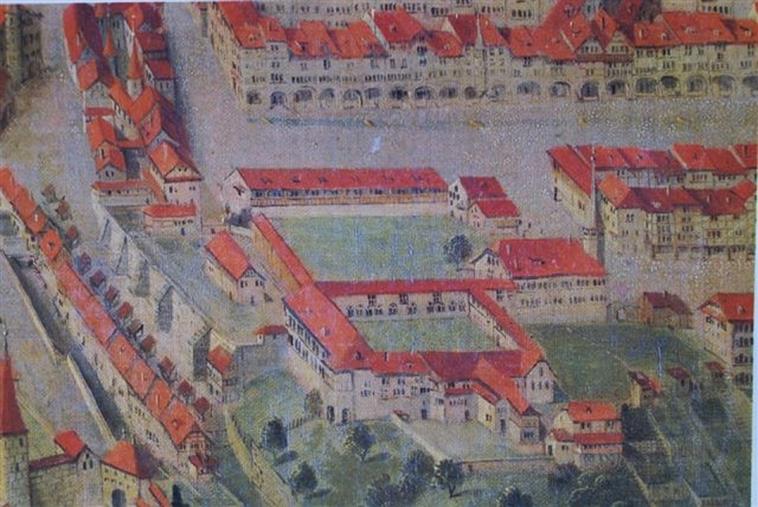
In 1632, the library received the book collection of the diplomat and humanist Jacques Bongars (1554-1612), doubling the library collection with its over 3000 volumes.
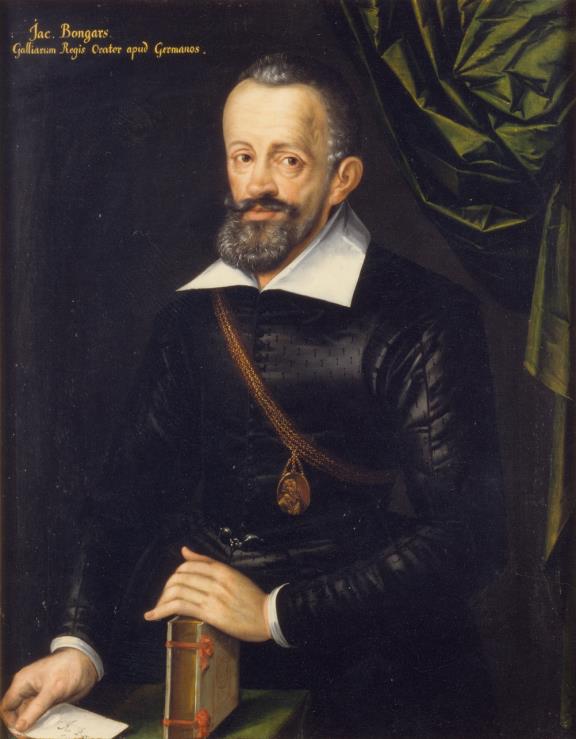
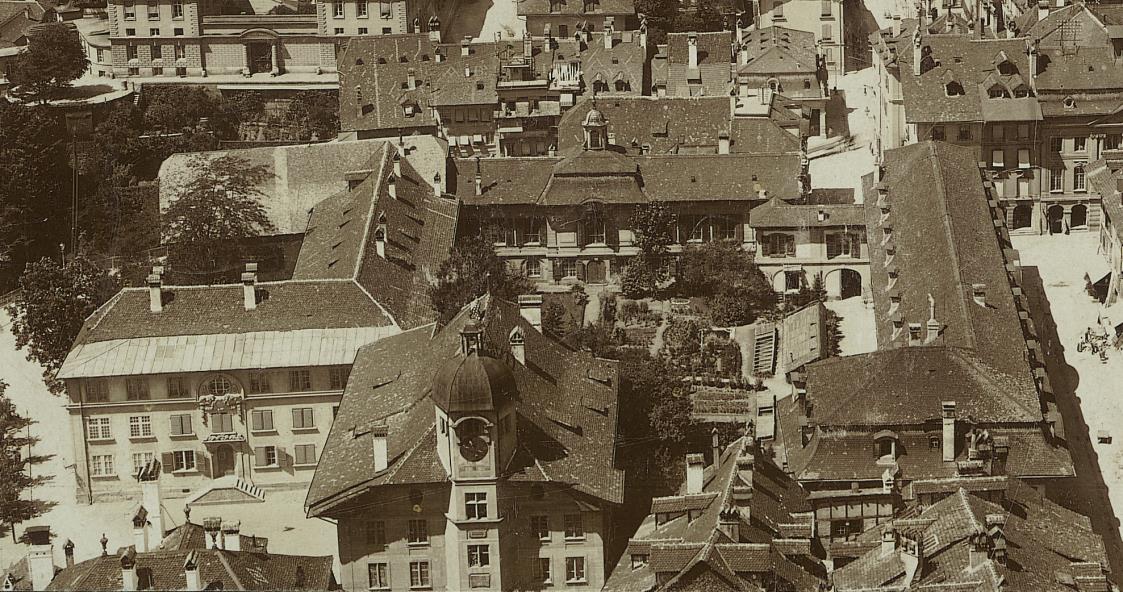
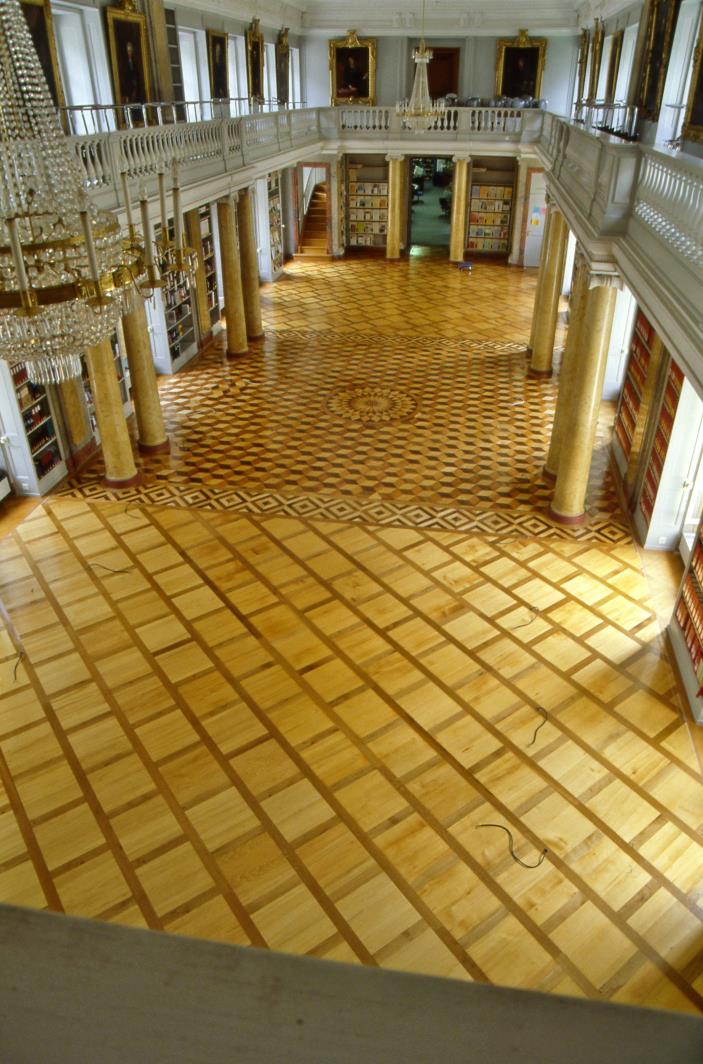
The market stalls and the mule stables on the ground floor were abolished in 1803 and the openings to the arcade were bricked up.
From 1860 to 1863, the library was extended towards the east (Münstergasse 61) by Gottlieb Hebler.
In 1887, the library was divided into a city library and a university library. Eduard v. Rodt oversaw the extension in the west part (Münstergasse 63) from 1904 to 1905.
In 1909, the library gallery of Niklaus Sprüngli was demolished. Since 1911, the gallery's façade has been standing as a fountain façade on Thunplatz.
In 1951, the Canton of Bern, the Burgergemeinde Bern and the residents of the city of Berne created the foundation City and University Library of Bern (StUB). At the same time, the Burgerbibliothek Bern was founded, taking over the manuscript and graphic departments of the former library.
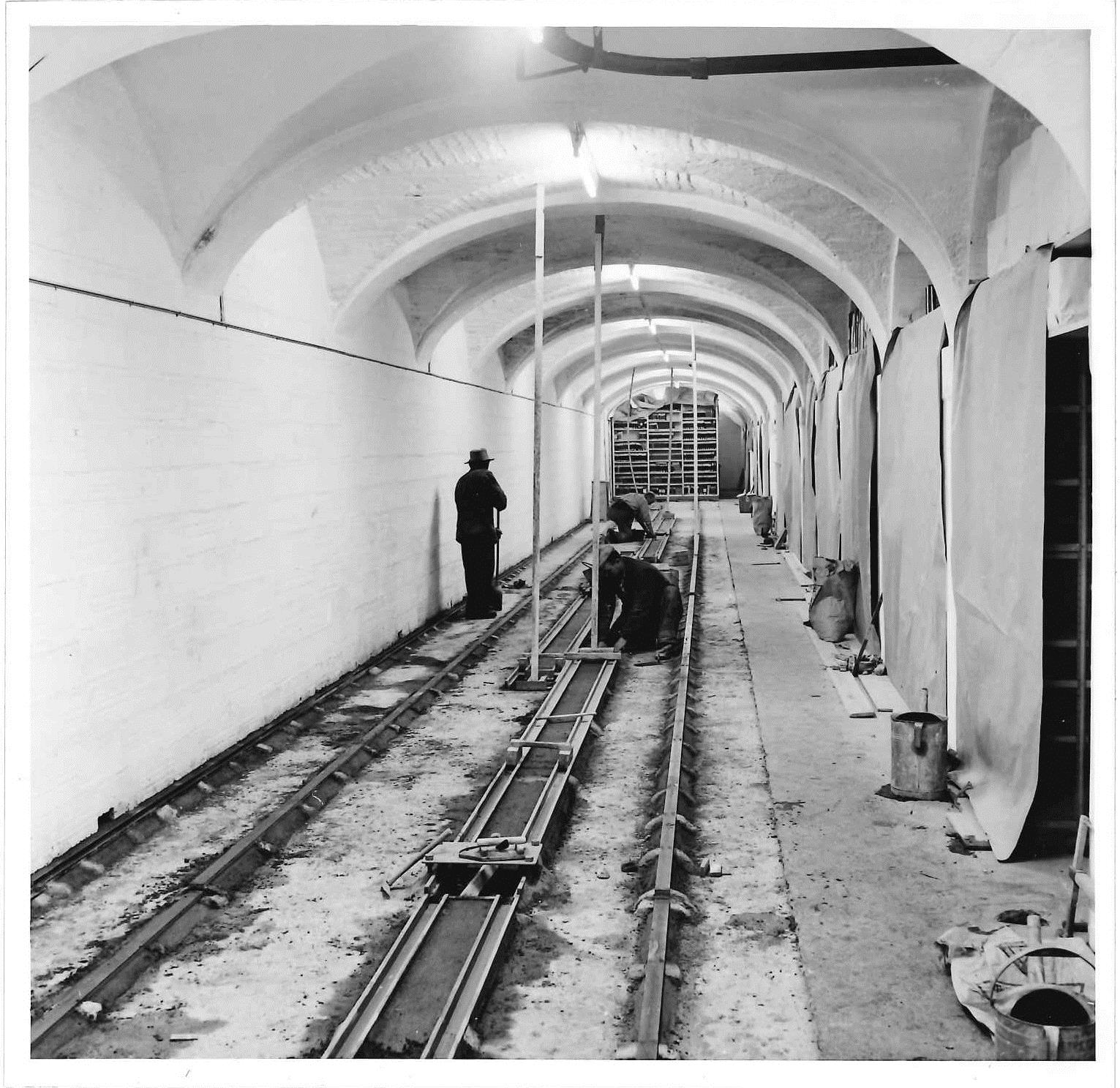
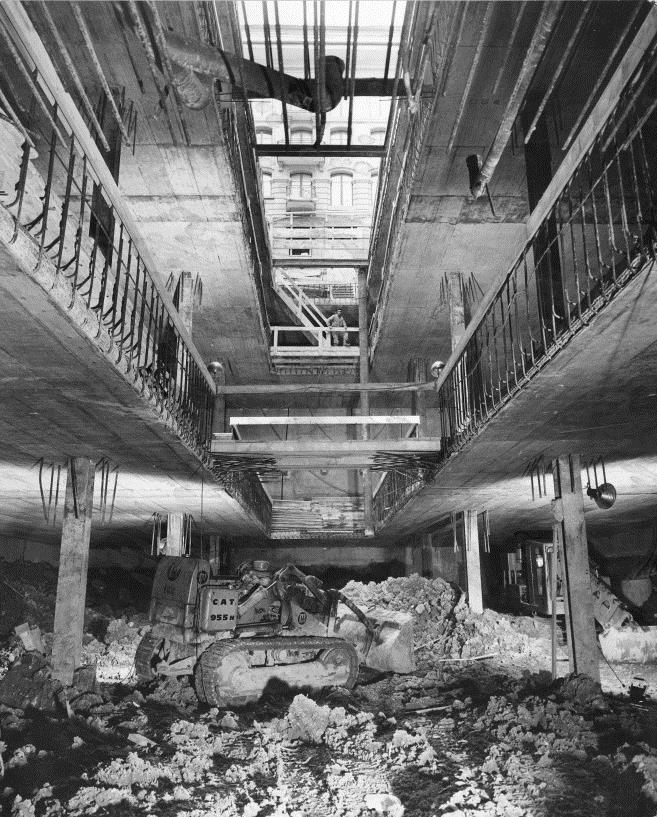
From 2007 to 2009, the City and University Library (StUB) and the university libraries merged to form the University Library of Bern (UB).
The last comprehensive renovation took place from 2014 to 2016. The library building at Münstergasse 61/63 was rebuilt during two and a half years. The renovations were completed in May 2016 and it reopened with the new name Bibliothek Münstergasse.
Building contractor, client: Burgergemeinde Bern
Investment: 37,3 million Swiss francs
Architects: alb architektengemeinschaft ag, Bern
Bibliography
- Engler, Claudia, Stadt- und Universitätsbibliothek Bern, in: Handbuch der historischen Buchbestände der Schweiz, Bern 2003
- Schatzkammern. 200 Jahre Bücher, Handschriften und Sammlungen im Gebäude an der Münstergasse 61-63. In: Berner Zeitschrift für Geschichte und Heimatkunde, 56 (1994), 161-252
- Michel, Hans A. Das wissenschaftliche Bibliothekswesen Berns vom Mittelalter bis zur Gegenwart. In: Berner Zeitschrift für Geschichte und Heimatkunde, 47 (1985), 168-234
- Bibliotheca Bernensis 1974. Festgabe zur Einweihung des umgebauten und erweiterten Gebäudes der Stadt- und Universitätsbibliothek und der Burgerbibliothek Bern am 29. und 30. August 1974. Bern, 1974
- Bloesch, Hans (Hrsg.): Die Stadt- und Hochschulbibliothek Bern. Zur Erinnerung an ihr 400jähriges Bestehen und an die Schenkung der Bongarsiana im Jahr 1632. Bern: Gustav Grunau, 1932

